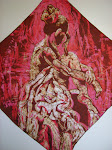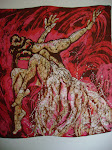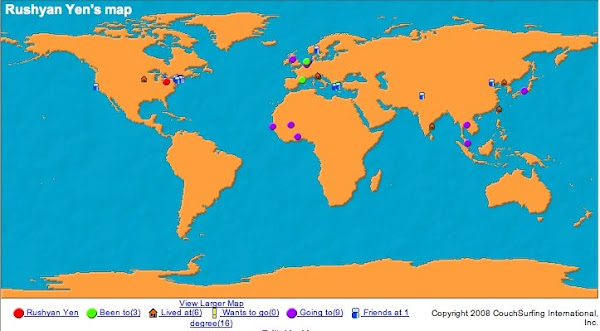Han-bosen translates to "half-resist" and is a technique of creating shading by varying the thickness of the wax. This is what elevates Japanese rozome to true fine art and sets it apart from all other batiks of the world. Here, rozome master Mitsuo Takaya demonstrates this difficult technique.

Sketch outline onto the back of the work.

The thickness of wax is controlled by the speed and pressure of the brush as well as the temperature of the wax. To create maximum thickness, each layer of wax must be cool before the next one is painted on. Thin areas are made by painting on hot wax quickly and with maximum brush pressure.

Details are possible by using a sharp object to scratch away wax
Penetrating oil is the secret ingredient added to the dye which allows it to go though the wax and create shading.
 The dye is rubbed in with a flat "surikome" brush. Where the wax is thin, the color will penetrate, making shadows and texture.
The dye is rubbed in with a flat "surikome" brush. Where the wax is thin, the color will penetrate, making shadows and texture. 
If the shading is not enough, the wax can be further scratched away with a hard bristle brush and dyed again.
A three-dimensional hand painted with wax. Amazing!
A piece of paper can be used as a tool to create faint shapes and outlines.
Another method is to thin the wax by melting it with a blow dryer

Paint more wax on top of thinned wax
And watch the pattern emerge as dye is painted on.

My own attempts at Han-bosen. It's even more difficult than it first appears!














1 comment:
After seeing his amazing piece with the fantastic shading graduation, I can see why you were so hard on your own piece, but it is a technique I'm sure you will improve in and if it is an effect you desire to implement in your own style as it develops, I'm sure you will someday master it... and I am guessing it is something that really interests you, based on the two bottles of that penetrating oil you bought!
Post a Comment